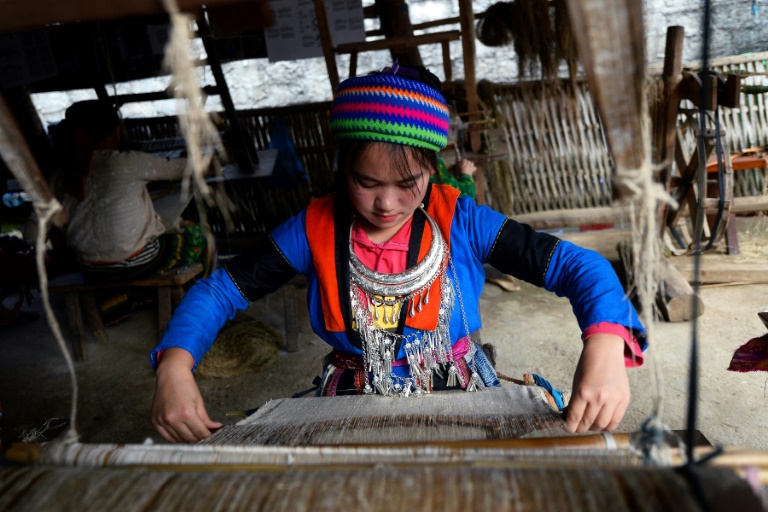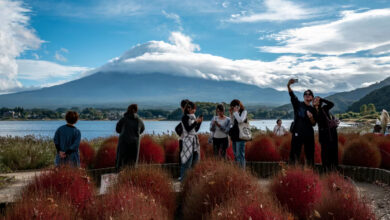
Thao Thi Van was just two when her mother disappeared during a trip to the market, likely taken by traffickers preying on women from the Hmong hill tribes of northern Vietnam to sell as brides or into brothels in China.
Now aged 13 she is still haunted by the fate of her missing mother but has found some solace at a textile cooperative for marginalized women in the region.
“I have almost no friends at school because they tease me for having no mother. I envy those kids with a mum,” the slight teenager told AFP in tears.
“I have fun working here because I can earn some money and no-one teases me,” Van said.
She’s been taken in by the older women she works with at the co-op, where she has earned a reputation as a skilled embroiderer.
The collective makes hemp handbags and table runners, coasters and stuffed animals, and the women can earn up to $170 per month, a decent wage in impoverished Ha Giang province.
Thousands of Vietnamese women are trafficked or tricked across the border every year and in this remote northern mountainous region of Vietnam, spitting distance from the Chinese border, women and girls frequently vanish from their communities.
China’s buy-a-bride industry is booming, fueled by a surplus of 30 million males. Some women go willingly, others are kidnapped or find themselves forced into marriage.
The lucky few who escape marriages or sexual slavery in China often face stigma on their return to Vietnam and are shunned by neighbors.
Driven to offer such victims a purpose — and an income — Vang Thi Mai set up the Lung Tam Linen Cooperative in 2001.
“Society may not like them but here they are confident,” said Mai, dressed in a traditional pleated indigo hemp skirt and embroidered coat.
– Sexism runs deep –
The co-op quickly grew and today is a hive of activity that employs more than 130 women, not just trafficking victims but also orphans, single mothers and seniors, who weave, dye and stitch indigo blue and yam orange fabrics from dawn to dusk.
With the jobs she is providing, Mai hopes to empower Hmong woman in a culture where sexism runs deep and where most women earn just a few dollars a month as farmers.
That poverty is in part what drives the cross-border trade in women and boosting incomes protects potential victims — and increases their social status.
“If women, especially trafficked women, are working in a group together they make themselves stronger by gaining negotiating power, accelerating knowledge and integrating into society,” said Nguyen Tien Phong, head of inclusive growth at United Nations Development Program in Vietnam.
This is just the kind of support Mai envisioned when she established the center, today a popular spot for tourists winding through the mountain-specked province on motorbikes.
But Mai has another goal too: to preserve the centuries-old custom of Hmong weaving, a tradition that has faded in many Hmong homes as modernity has crept in.
Girls who once learned the time-consuming craft from their mothers and grandmothers are busy these days with school work, or Facebook, or hanging out with friends.
Most women in the area have swapped their colorfully embroidered hemp jackets and indigo blue hemp skirts for Made-in-China polyester outfits.
“The traditional dignity and the cultural essence of the Hmong in Vietnam has eroded, I need to restore that with old women teaching to skills to younger ones,” Mai said.
“Here we do things manually to preserve our traditional identity, the pearl of Vietnamese culture.”




